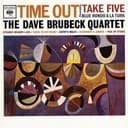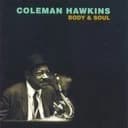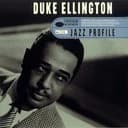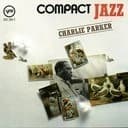Theory and Formula of the D♯ Bebop Dominant Scale
The D♯ bebop dominant scale follows the interval formula 2-2-1-2-2-1-1-1 semitones, producing the notes D♯, E♯ (F), F𝄪 (G), G♯, A♯, B♯ (C), C♯, C𝄪 (D), and D♯. The intervals relative to the root are 1 (root), 2 (major second), 3 (major third), 4 (perfect fourth), 5 (perfect fifth), 6 (major sixth), ♭7 (minor seventh), and 7 (major seventh). This eight-note octatonic structure ensures that chord tones land consistently on strong beats during eighth-note jazz lines, a rhythmic innovation fundamental to bebop language developed by pioneers including Charlie Parker, Dizzy Gillespie, and Bud Powell in the 1940s.
Enharmonic Relationship: Why E♭ Bebop Dominant Is Preferred
While the D♯ bebop dominant scale is theoretically valid, the E♭ bebop dominant scale is universally preferred in practical jazz performance and pedagogy. The D♯ dominant spelling requires double-sharps (C𝄪 for the major seventh, F𝄪 for the major third) and awkward enharmonic equivalents (E♯ for F, B♯ for C), creating unnecessary reading complexity. In contrast, E♭ bebop dominant uses simple flats and naturals (E♭-F-G-A♭-B♭-C-D♭-D-E♭), making it immediately readable in jazz charts. Professional jazz musicians and educators consistently use E♭ notation when discussing this scale in the context of E♭7 dominant harmony.
Application in Jazz Improvisation Over D♯7 Chords
When encountering D♯7 (D♯ dominant seventh) chords in jazz contexts—rare but possible in modulating passages or compositions in D♯ major or G♯ minor—the D♯ bebop dominant scale provides authentic bebop vocabulary. The scale works over any dominant seventh chord built on D♯, including D♯9, D♯13, and altered dominant extensions. In ii-V-I progressions resolving to G♯ major or minor (A♯m7-D♯7-G♯maj7), this scale creates smooth chromatic voice leading characteristic of bebop style. However, most jazz musicians mentally translate D♯7 to E♭7 and apply E♭ bebop dominant patterns due to notational simplicity.
Piano Practice Techniques and Fingering Strategies
For pianists committed to learning the D♯ bebop dominant scale (or more practically, thinking of it as E♭ bebop dominant), establish consistent fingering patterns. Right hand ascending from D♯: 3(D♯)-1(E♯/F)-2(F𝄪/G)- 3(G♯)-4(A♯)-1(B♯/C)-2(C♯)-3(C𝄪/D)-4(D♯). Begin practice at 60-80 BPM, playing strict eighth notes while emphasizing chord tones (D♯, F𝄪/G, A♯, C♯) on downbeats. Progress through various rhythmic groupings (triplets, sixteenth notes) and practice sequences (thirds, fourths) across multiple octaves. Most importantly, practice reading and playing this scale in E♭ notation to develop practical facility for real-world jazz performance situations.
Relationships to Other D♯ and E♭ Scales
The D♯ bebop dominant scale shares its foundation with D♯ Mixolydian (the fifth mode of D♯ major), differing only by the added major seventh (C𝄪) chromatic passing tone. Its enharmonic twin, the E♭ bebop dominant scale, produces identical pitches with superior notational clarity. Jazz pianists also benefit from exploring the E♭ bebop major scale, E♭ Mixolydian, and E♭ altered scale as related dominant scale options, choosing between them based on harmonic context, chord extensions, and desired melodic color in improvisation.





